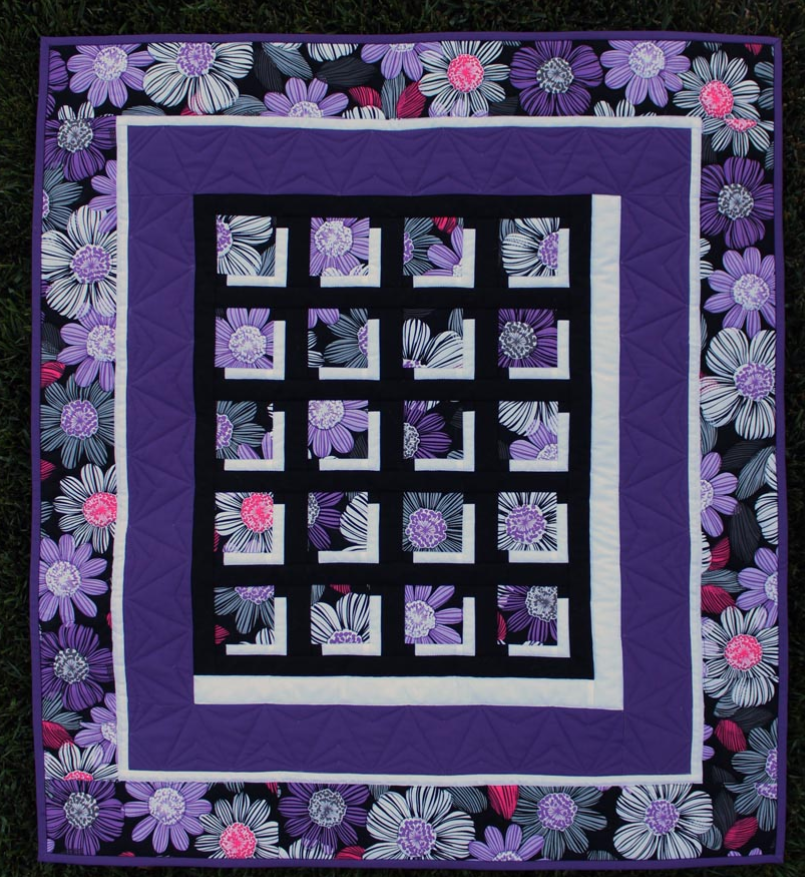Embarking on the journey of creating a Shadow Purple Flower Block Quilt is not only a testament to one’s sewing skills but also a dive into the rich tapestry of quilting history. This project, a delightful blend of traditional craftsmanship and modern aesthetic, invites both seasoned quilters and newcomers to explore the intricate world of quilt making.
The Purple Flower Block, with its unique design and approach, offers a canvas for creativity and a gateway to understanding the fundamentals of quilting.
The Essence of Shadow Purple Flower Block: A Quilting Story
Quilts have long been a medium for storytelling, and the Shadow Purple Flower Block Quilt is no exception. This project breathes life into fabrics, allowing each piece to contribute to a larger narrative.
The shadows created in the quilt’s pattern are reminiscent of life’s subtle contrasts and complexities. They symbolize the dance between light and dark, giving depth and dimension to the design. This section delves into the cultural and artistic significance of shadow play in quilting.
Precision in Pieces: The Technical Heart
At the core of the Shadow Purple Flower Block Quilt lies the meticulous process of cutting and piecing. Precision is paramount, as even a fraction of an inch can alter the entire look and feel of the quilt.
This section explores the importance of accuracy in quilting, from selecting the right tools to mastering the art of measurement and cutting. It also sheds light on the techniques used to create the quilt’s signature shadow effect, emphasizing the role of color and fabric choice.
Preparing for the Quilt Journey: Tips and Insights
Before diving into the creation of the Shadow Purple Flower Block Quilt, it’s crucial to set the stage for success. This preparation involves not only gathering materials and tools but also mentally and physically setting up your workspace.
In this section, readers will find advice on organizing their quilting space, tips for staying focused and motivated, and insights into the quilt-making process that will help them approach the project with confidence and excitement.
Materials for Shadow Purple Flower Block Quilt
- Focus Fabric: Twenty 3″ squares. A quarter yard or a fat quarter of fabric can be used if the squares are from the same fabric.
- Purple Fabric: 1/4 yard or fat quarter of a solid, medium value neutral color.
- Background Fabric: 3/8 yard of light solid fabric.
- Backing Fabric: 5/8 yard.
- Binding Fabric: 1/4 yard.
Cutting Instructions for Quilt Top:
- Focus Squares: Cut twenty 3″ squares.
- Purple Fabric: Cut twenty rectangles each of 1″ x 2 1/2″ and 1″ x 3″.
- Background Fabric:
- Forty 1″ squares.
- Twenty 1 1/2″ x 3 1/2″ rectangles.
- Five 19 1/2″ x 1 1/2″ strips for sashing.
- Two 17 1/2″ x 1 1/2″ strips for the sides.
These measurements are integral to achieving the quilt’s unique shadow effect and overall design. It’s essential to follow these cutting instructions closely for the best results. The choice of fabric colors and patterns will significantly influence the visual impact of the quilt, so select these with care to enhance the shadow effect.

Full Pattern: Click Here
Step-by-Step
- Cut Fabrics: Following the provided measurements, cut the focus, shadow, and background fabrics.
- Stitch Background to Shadow: Sew the 1″ squares of background fabric to the shadow fabric rectangles.
- Press Seams: Press the seams towards the shadow fabric.
- Attach to Focus Block: Sew the shadow-background pieces to the sides of the focus fabric squares.
- Top Stitching: Stitch the longer shadow-background strips to the top of the blocks.
- Press Again: Press these seams towards the focus fabric.
- Size Check: Ensure each block measures 3 1/2″ square, trimming if necessary.
- Arrange Blocks: Lay out the blocks in rows, ensuring the shadows face the same direction.
- Add Sashing: Sew 1 1/2″ x 3 1/2″ background rectangles as sashing between blocks.
- Long Sashing Strips: Attach long background strips between rows and around the quilt top.
- Quilting: Layer with batting and backing, then quilt, focusing on the shadow areas.
- Binding: Finish by trimming, squaring, and binding the quilt.
